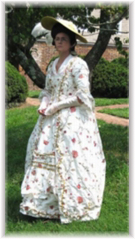On occasion we are asked to replicate something that has been lost, damaged or God forbid, stolen. If the damage is light, we can usually discern its materials, manufacture and processes and do a good job on duplication. It becomes a little more problematic when the original item is not there to copy and you end up with a sort of 'identikit' picture of what you are trying to do - never an ideal solution.
So, (and I will say this only once)! If you have an item that you love, PHOTOGRAPH IT! and I don't just mean a picture of you dancing with someone else, at a distance, where the only relevant piece that can be seen is a shoulder. I mean the whole thing, front, back and sides. sleeves, linings, facings, embroidery, stitch lines, buttons and fastenings, notions - and then do it again in close-up! It would also help if you can identify any of the materials used, in other words, make notes of sizes and sketches. It will also help any insurance claims!
Another point. We like watching things like the Antiques Roadshow, (one of the few programmes that hasn't suffered from the 'dumbing down syndrome' and interminable advert breaks)! We do spot the odd uniform or similar and we are struck by the fact that the experts, even for insurance valuation, consistently undervalue them. Lets take one example. If a 95th Rifle officers Dolmen came up, (and it won't - shame!) the material costs alone would not be covered by the valuation. 45 metres of Russia braid, 80 odd silver plated ball buttons, wool good enough to carry the weight of all that. Linings, facings etc.- and going by past performance I suspect the valuation they would give to be about £450.00. So check your insurance!- and get out that camera!
Friday, 27 February 2009
Tuesday, 10 February 2009
Quotations and Enquiries

This month has been quite a busy one on the enquiries front and we've had many interesting items to quote for including 'strapwork' (making the body of material from interwoven and crossed flat tubes of material or leather) and very complicated embroidery and applique items. Tudor and Victorian outfits do tend to be high on the agenda, which, I suppose, reflects the power of the national curriculum.
It seems that organisations are now looking to spend on fewer, higher quality items that will stand the rigours of heavy use, instead of having to replace them annually. We can only applaud their foresight!
Subscribe to:
Posts (Atom)



